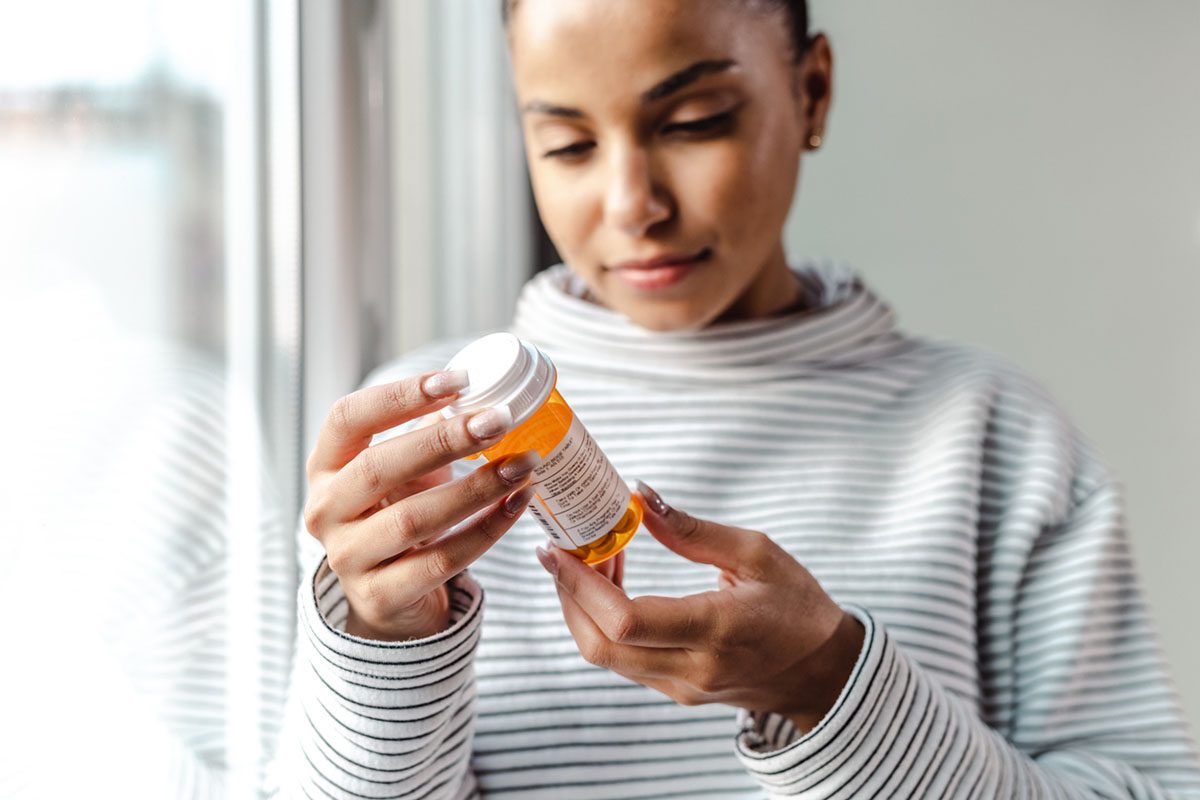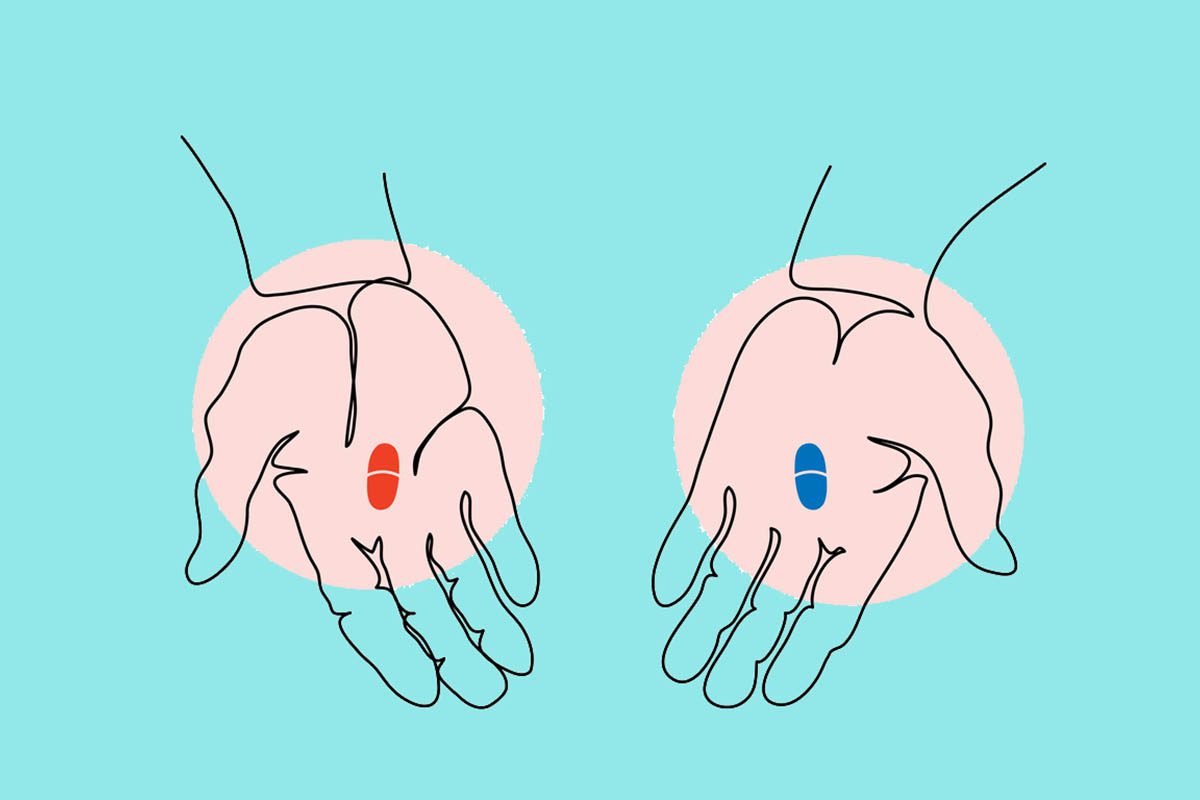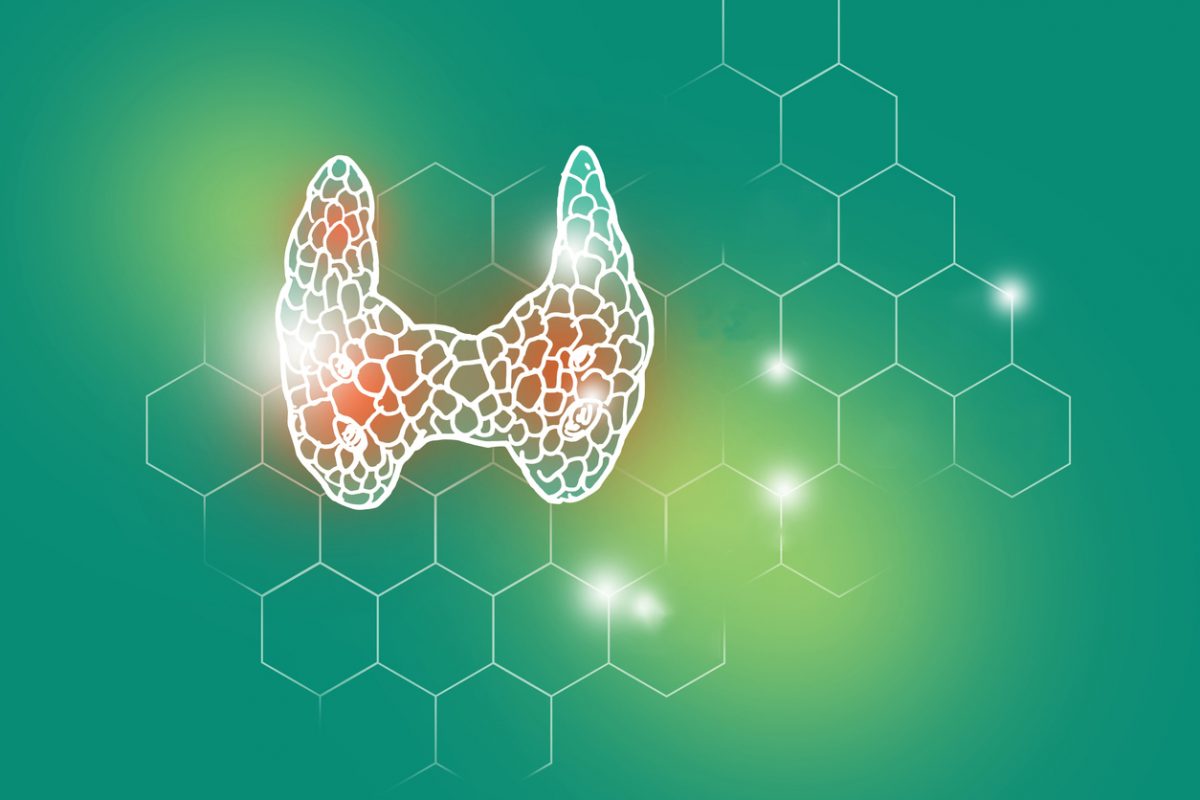
American Society of Clinical Psychopharmacology Corner
J Craig Nelson MD, Editor
Transcranial Magnetic Stimulation for Medication-Resistant Depression
Recently cleared by the US Food and Drug Administration (FDA) for treatment-resistant depression, repetitive transcranial magnetic stimulation (rTMS) offers a potentially viable alternative for patients who are unable to tolerate antidepressants, do not benefit from standard pharmacotherapy trials, or would otherwise have few options beyond electroconvulsive therapy. In this article, we review the basic and applied electrophysiologic principles for rTMS, putative mechanisms of action, parameters for clinical applications, and evidence for safety and efficacy in depression.
Physics of TMS
During rTMS, a small, insulated electromagnetic coil is placed on the scalp. A bank of capacitors is then rapidly discharged into the coil, which converts the electrical activity into a pulsed magnetic field that then passes through the cranium with minimal impedance. These magnetic fields in turn generate electric currents in the brain. Upon delivery of sufficiently intense TMS to the targeted area, the cortical neurons depolarize and action potentials are generated. Currently employed technology generates a powerful magnetic field of approximately 1.5 Tesla (comparable to that of a standard MRI) for a brief period of time (microseconds), which penetrates up to approximately 3 cm beneath the coil surface.1
Pulses administered can be single, paired, or in a series (ie, a "train," which in turn can vary in duration). Single and paired pulse TMS are more frequently used for neurodiagnostic purposes, whereas repetitive TMS is posited to have therapeutic potential in psychiatric disorders such as major depression. Many use the abbreviated terms rTMS and TMS interchangeably.
Putative Mechanisms of Action
While the exact mechanisms through which rTMS exerts its antidepressant action are unknown, preclinical rTMS studies have reported that forebrain serotonin output is enhanced and that serotonin receptor function is modulated.2,3 In human studies, functional MRI imaging of 1 Hz TMS over the left dorsolateral prefrontal cortex (DLPFC) produced activation of deeper structures, including the insula, putamen, hippocampus, and thalamus, via frontal-subcortical neuronal circuits.4 Clinical neuroendocrine correlates of successful TMS include increased concentrations of thyroid-stimulating hormone5 and "normalization" of cortisol secretion.6 Other mechanism-of-action studies of TMS reviewed by Richelson7 include increases in expression of brain-derived neurotrophic factor (BDNF) in rat brain and increased concentrations of BDNF in human serum.
Description of rTMS in Clinical Use
In clinical applications, the main variables comprise "dose" of energy delivered per session (expressed as a percentage of the motor threshold—usually between 80% and 120%), location (the specific brain region being targeted and/or the position of rTMS coil placement on a patient’s head), pulse frequency (expressed in hertz), intertrain interval (the time in between trains of pulsed energy when no stimulation is occurring, an important safety parameter), total number of pulses per session (3,000 in recent rTMS trials), and frequency and total number of sessions (5 per week for 6 weeks of acute treatment in recent protocols). The minimal amount of energy required to activate the motor strip of a particular individual is called the motor threshold (MT) and is determined by titrating the amount of energy from the TMS device until a visible twitching movement of the contralateral thumb is reliably produced following single pulses of TMS. Motor threshold determination on the left motor cortex guides "dosing" and placement of the coil. The coil is moved 5 cm anteriorly in a parasagittal plane from the site of MT determination on the scalp overlying the left DLPFC.
Safety Profile
In general, rTMS is both safe and well tolerated. The most significant risk is inadvertent induction of a generalized motor seizure, but thorough neurologic screening and treatment within recommended stimulation parameters reduce this risk to less than 1 per 10,000 rTMS sessions,8 a rate comparable to that observed with marketed antidepressant drugs. A recent large clinical trial conducted over 10,000 rTMS sessions without a seizure.9 Posttreatment headaches may affect about 10% of patients but are generally mild, brief, and easily managed with nonnarcotic oral analgesics. Scalp pain at the site of stimulation is common; it also tends to be mild and limited to the time of stimulation during the initial treatment sessions. Because the rTMS device emits clicking sounds with each train of magnetic pulses, there is the potential for rTMS devices to have adverse effects on hearing. To minimize auditory risks, patients should wear earplugs or headphone earbuds during the procedure. Case reports of switching into mania have been described.10 Improvement in neuropsychological functioning has been reported following rTMS administration for major depression, but it has not been possible to separate the effects of rTMS from the observed improvements in mood.11
Efficacy of rTMS for Medication-Resistant Major Depression
FDA clearance for rTMS in depression was based on the results of a large, industry-sponsored, multicenter, double-blind, monotherapy study12 that randomized 325 medication-free patients with moderately treatment-resistant major depression. rTMS was delivered 5 times per week for 6 weeks at 10 pulses/s, 120% of MT, 3,000 pulses/session. In the evaluable sample (n = 301), active rTMS showed a trend toward superiority to sham treatment on the primary outcome measure (change on the Montgomery-Asberg Depression Rating Scale [MADRS]) at week 4 (P = .057). Because of unequal baseline severity, a supplementary analysis was performed excluding 6 patients with baseline MADRS scores below 20. On this analysis, rTMS was superior to sham (P = .038). At the secondary time point of 6 weeks, rTMS again showed a trend in the full sample (P = .058) and in the sample with 6 patients removed (P = .052). rTMS was significantly more effective than sham treatment on the secondary outcome measure (change in Hamilton Depression Rating Scale [HDRS] score) at weeks 4 and 6. Response rates on the MADRS and the HDRS were significantly higher with rTMS than sham at both 4 weeks and 6 weeks. Remission rates did not differ significantly at 4 weeks on either scale. At 6 weeks, remission rates were significantly higher on the MADRS and the 24-item HDRS.
At the end of the acute-phase trial, patients who did not respond, regardless of their treatment condition, were invited to cross over to an open-label 6-week TMS trial. Patients remained blinded to their original treatment condition. A third phase of the study allowed for the transition of TMS into a 24-week continuation phase, with antidepressants available for optional pharmacotherapy in the event of symptom worsening. Outcomes for those who crossed to the open-label study were comparable with those observed in the blinded acute phase (42%-43% response and 20%-27% remission rates, depending on the scale used) and suggest that rTMS can safely be delivered concurrently with antidepressant.13
Analysis of predictors of response in the above study14 indicated a large effect (effect size = 0.83) with rTMS among 164 patients who had failed 1 prior drug trial, but minimal effects in the 137 patients who failed 2 to 4 trials in the current episode. Based in part on that post hoc analysis, the FDA cleared the NeuroStar rTMS device for use in adult major depressive disorder patients who failed 1 adequate antidepressant trial. In this subsample, 97% of patients were experiencing recurrent depressive episodes, 35% had comorbid anxiety disorders, and 48% were unemployed due to their depression. While the place of rTMS in an algorithm for resistant depression is yet to be established, in a recent review Demitrack and Thase15 found the efficacy of rTMS similar to that for antidepressant therapy or atypical antipsychotic augmentation in treatment-resistant depression.
Over the past decade, there have been numerous small trials of rTMS for depression. Seemingly inconsistent results may reflect methodological heterogeneity in treatment delivery, study design, and target population. In a random-effects meta-analysis of fast-frequency rTMS over the DLPFC for depression, Schutter16 examined double-blind sham-controlled trial data from 30 studies (n = 1164 patients), including the study by O’ Reardon et al.12 Funnel plot symmetry and a high Rosenthal’s fail-safe N (NR = 269.6) indicated that publication bias was not likely. Total heterogeneity of effect sizes was not significant, suggesting consistency of treatment effects among studies. The estimated standardized effect size was found to be moderate, d = 0.39 (95% CI, 0.25-0.54), leading the author to conclude that "high frequency rTMS over the left DLPFC was superior to sham treatment"(p72) for major depression. In his discussion, Schutter pointed to the lack of proper sham condition and integrity of blinding and some technological/methodological factors as limitations of the existing evidence. To these we may add that the database regarding relapse prevention or maintenance therapy is limited and that comparisons of rTMS with electroconvulsive therapy are limited to small open studies.
A large (n = 200), federally funded, randomized, sham-controlled, multisite rTMS trial has recently been completed.17 This trial incorporated a novel active sham technique, determined coil placement by entry MRI scans, and used essentially the same stimulation parameters as O’ Reardon and colleagues.12 The study employed a study design that incorporated 3 weeks of daily (weekday) blinded treatment followed by continued blinded treatment for up to another 3 weeks in those patients who improved. In this study, rTMS was superior to sham treatment on the primary outcome.
Conclusion
rTMS is safe, well tolerated, and at least moderately efficacious for medication-resistant depression. However, questions remain about patient selection, how best to deliver the treatment (ie, parameter optimization), and its place in the treatment algorithm relative to existing treatments for resistant depression.
Author affiliations: Mood Disorders Research Program, Butler Hospital, and the Department of Psychiatry and Human Behavior, The Warren Alpert Medical School at Brown University, Providence, Rhode Island. Potential conflicts of interest: In the past 3 years, Dr Carpenter has been a consultant/advisory board member for Abbott, Bristol-Myers Squibb, Cyberonics, Medtronic, Novartis, Pfizer, Wyeth, Sepracor, AstraZeneca, and Neuronetics; has received grant/research support from the National Institute of Mental Health, NARSAD, Pfizer, UCB Pharma, Sepracor, Cyberonics, US Department of Defense, Medtronic, and Neuronetics; has received honoraria for CME from the American Psychiatric Association, Wyeth, Cyberonics, and AstraZeneca; has been on the speakers’ bureaus of AstraZeneca, Pfizer, Cyberonics, and Neuronetics; and has received travel support from Neuronetics. Dr Yip reports no financial or other relationship relevant to the subject of this article. Corresponding author: Agustin G. Yip, MD, PhD, Butler Hospital, 345 Blackstone Blvd, Providence, Rhode Island 02906 ([email protected]).
References
1. Demitrack MA. Psychopharm Rev. 2007;42(6):43-50.
2. Ben-Shachar D, Belmaker RH, Grisaru N, et al. J Neural Transm. 1997;104(2-3):191-197. doi:10.1007/BF01273180 PubMed
3. Juckel G, Mendlin A, Jacobs BL. Neuropsychopharmacology. 1999;21(3):391-398. doi:10.1016/S0893-133X(98)00097-9 PubMed
4. Li X, Nahas Z, Kozel FA, et al. Biol Psychiatry. 2004;55(9):882-890. doi:10.1016/j.biopsych.2004.01.017 PubMed
5. Szuba MP, O’ Reardon JP, Rai AS, et al. Biol Psychiatry. 2001;50(1):22-27. doi:10.1016/S0006-3223(00)01118-5 PubMed
6. Pridmore S. Psychiatry Clin Neurosci. 1999;53(1):33-37. doi:10.1046/j.1440-1819.1999.00467.x PubMed
7. Richelson E. Psychiatr Ann. 2007;37(3):181-187.
8. Wassermann EM. Electroencephalogr Clin Neurophysiol. 1998;108(1):1-16. doi:10.1016/S0168-5597(97)00096-8 PubMed
9. Janicak PG, O’ Reardon JP, Sampson SM, et al. J Clin Psychiatry. 2008;69(2):222-232. doi:10.4088/JCP.v69n0208 PubMed
10. Dolberg OT, Schreiber S, Grunhaus L. Biol Psychiatry. 2001;49(5):468-470. doi:10.1016/S0006-3223(00)01086-6 PubMed
11. Schulze-Rauschenbach SC, Harms U, Schlaepfer TE, et al. Br J Psychiatry. 2005;186(5):410-416. doi:10.1192/bjp.186.5.410 PubMed
12. O’ Reardon JP, Solvason HB, Janicak PG, et al. Biol Psychiatry. 2007;62(11):1208-1216. doi:10.1016/j.biopsych.2007.01.018 PubMed
13. Avery DH, Isenberg KE, Sampson SM, et al. J Clin Psychiatry. 2008;69(3):441-451. doi:10.4088/JCP.v69n0315 PubMed
14. Lisanby SH, Husain MM, Rosenquist PB, et al. Neuropsychopharmacology. 2009;34(2):522-534. doi:10.1038/npp.2008.118 PubMed
15. Demitrack MA, Thase ME. Psychopharmacol Bull. 2009;42(2):5-38. PubMed
16. Schutter DJLG. Psychol Med. 2009;39(1):65-75. doi:10.1017/S0033291708003462 PubMed
17. George MS, Lisanby SH, Avery D, et al. Daily left repetitive prefrontal transcranial magnetic stimulation therapy for major depressive disorder: a sham-controlled randomized trial. Arch Gen Psychiatry. In press.
doi:10.4088/JCP.10ac06054blu
© Copyright 2010 Physicians Postgraduate Press, Inc.



